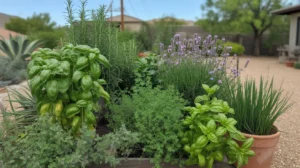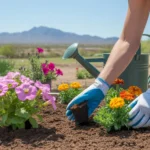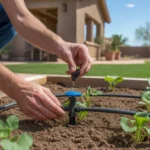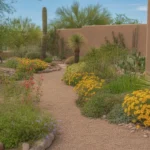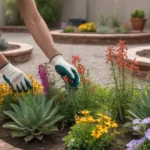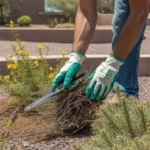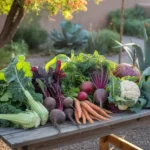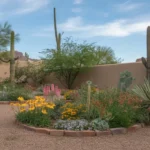Spring is the perfect time to kickstart your herb garden in Gilbert. With our warm climate and ample sunshine, herbs thrive in our desert environment. Whether you’re a seasoned gardener or just starting out, this essential herb starter guide will help you cultivate a lush, fragrant yard that’s the envy of the neighborhood. From selecting the right herbs to planting and care tips, we’ll cover everything you need to know to get your spring herb garden off to a strong start.
Why Grow Herbs in Your Gilbert Yard?
Herbs offer a multitude of benefits for Gilbert gardeners. Not only do they add visual interest and delightful aromas to your landscape, but many herbs are also incredibly useful in the kitchen and home. Fresh herbs can elevate your cooking, providing bright flavors to your favorite dishes. Certain herbs like lavender and mint have soothing properties that can be used in teas, bath products, and aromatherapy.
Growing your own herbs also ensures you have a steady supply of fresh, organic ingredients right at your fingertips. You’ll save money on expensive store-bought herbs while knowing exactly how your herbs were grown – no pesticides or mystery ingredients. Plus, many herbs are relatively low-maintenance and well-suited to container gardening, making them perfect for Gilbert yards of all sizes.
Top Herbs to Plant in Your Gilbert Spring Garden
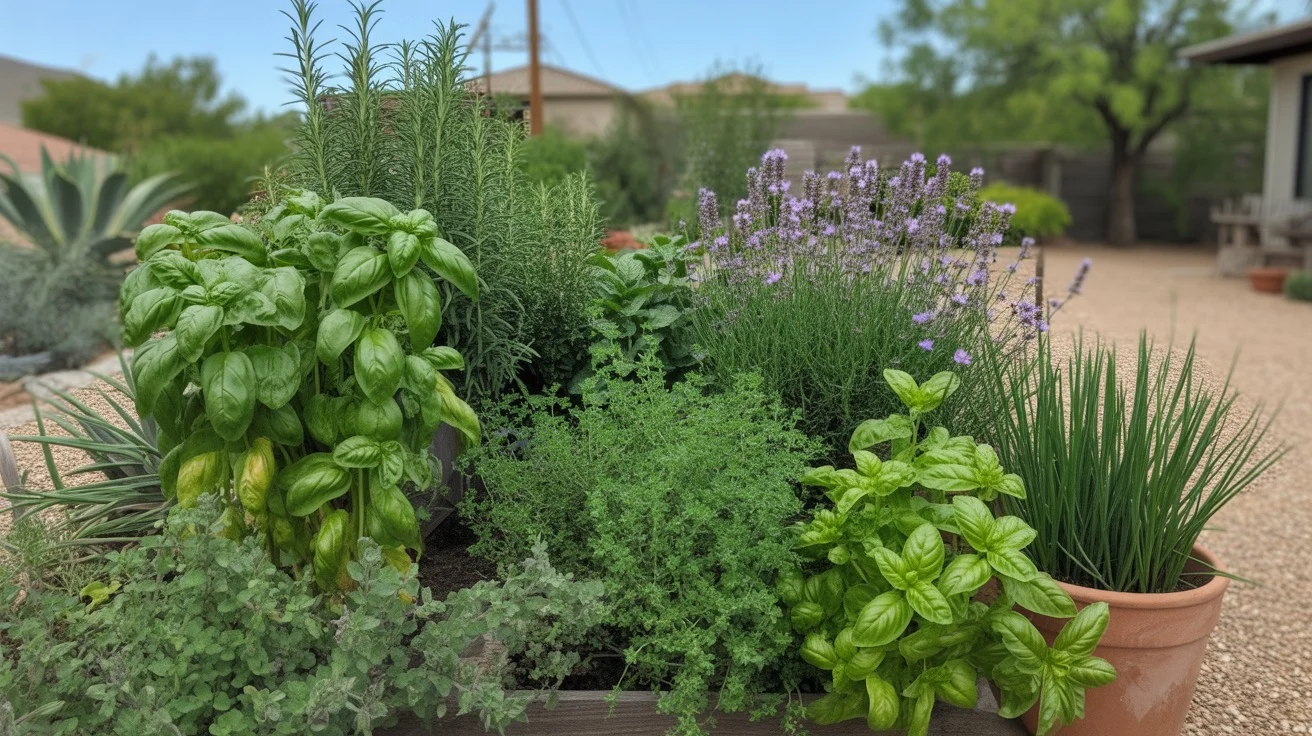
With so many herbs to choose from, it can be tough to know where to start. Here are some of the best herbs to include in your Gilbert spring garden:
- Basil: A staple in many cuisines, basil loves the heat and thrives in Gilbert summers. Plant in full sun and well-draining soil.
- Rosemary: This hardy, drought-tolerant herb is a natural fit for desert landscapes. Its piney aroma and flavor is divine with meats and potatoes.
- Mint: Mint spreads rapidly, so plant it in containers to keep it in check. Enjoy fresh mint in teas, cocktails, salads and more.
- Thyme: A compact, low-growing herb perfect for borders or rock gardens. Thyme’s earthy flavor is a natural with eggs, beans and vegetables.
- Lavender: While not edible, this fragrant herb attracts pollinators and makes a stunning addition to bouquets and sachets.
Other herbs that do well in Gilbert’s climate include sage, oregano, chives, dill, cilantro and parsley. Mix and match based on your cooking preferences and the dishes you love to make.
Planting and Care Tips for a Thriving Herb Garden
Once you’ve selected your herbs, it’s time to get planting. Most herbs prefer full sun (at least 6 hours per day) and well-draining soil. Amend heavy clay soils with compost or plant in raised beds for better drainage. Herbs can be planted in garden beds, borders, or containers – get creative with your placement!
Water newly planted herbs regularly to establish strong roots, then reduce watering as they mature. Many Mediterranean herbs like rosemary and thyme are drought-tolerant once established. Fertilize herbs lightly with a balanced, organic fertilizer every few weeks during the growing season.
Harvest herbs frequently to encourage bushier growth. Snip stems in the morning after the dew has dried for the best flavor. Annual herbs like basil and dill can be allowed to flower and set seed at the end of the season.
Companion Planting for Healthier, More Productive Herbs
Companion planting is the practice of grouping complementary plants together for their mutual benefit. Certain herbs make great companions for other herbs, as well as vegetables and ornamentals. For example:
- Basil improves the flavor of tomatoes and repels pests.
- Dill attracts beneficial insects that prey on aphids.
- Mint deters ants and rodents (but keep it contained!).
- Lavender’s scent can deter deer and rabbits.
Experiment with different combinations to find what works best in your Gilbert yard. Be mindful of each plant’s growing requirements – don’t pair a water-loving herb with a drought-tolerant one, for example.
Preserving and Using Your Gilbert-Grown Herbs
One of the joys of growing your own herbs is finding creative ways to use them. In addition to adding fresh snipped herbs to your cooking, you can also dry or freeze herbs for longer storage. To dry, tie clean stems in small bundles and hang upside-down in a cool, dark place until crisp. Crumble the leaves into airtight containers.
You can also freeze herbs for up to 6 months. Chop clean herbs finely, pack into ice cube trays, and top off with water or olive oil before freezing. The frozen cubes are perfect for tossing into sauces, soups and stews.
Don’t forget the power of herbal teas and infusions. Steep fresh or dried herbs in boiling water for a soothing, aromatic beverage. Mint, chamomile, and lavender make wonderful calming teas, while sage and thyme can help soothe sore throats.
Troubleshooting Common Herb Garden Issues
Even with the best care, problems can crop up in your herb garden from time to time. Here are some common issues Gilbert gardeners might face and how to manage them:
- Yellowing leaves: Often a sign of overwatering. Allow soil to dry out between watering and ensure proper drainage.
- Bolting: When herbs like basil and cilantro flower and set seed prematurely. Pinch off flowers to extend the harvest.
- Powdery mildew: A fungal disease that thrives in warm, humid conditions. Prune affected areas and improve air circulation.
- Pests: Aphids, whiteflies, and spider mites can attack herbs. Try insecticidal soaps or neem oil for control.
By staying vigilant and acting quickly, you can prevent small problems from turning into major issues in your herb garden. A little TLC goes a long way!
With this essential herb starter guide in hand, you’re well on your way to cultivating a lush, productive spring garden in your Gilbert yard. Whether you’re looking to spice up your cooking, attract pollinators, or simply enjoy the beauty and aroma of fresh herbs, there’s never been a better time to dig in. Happy planting!

